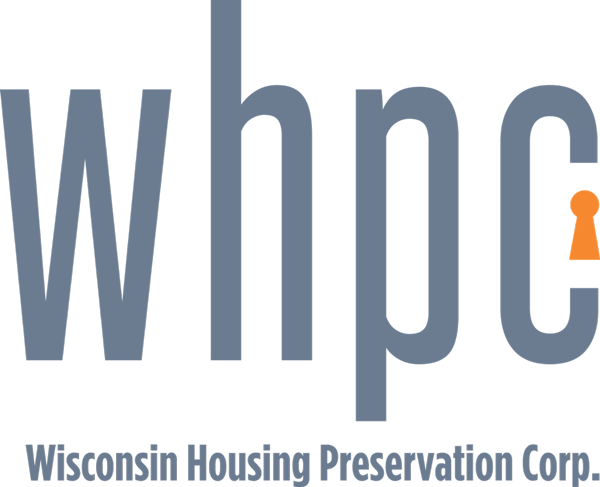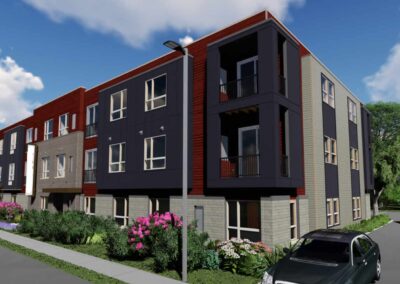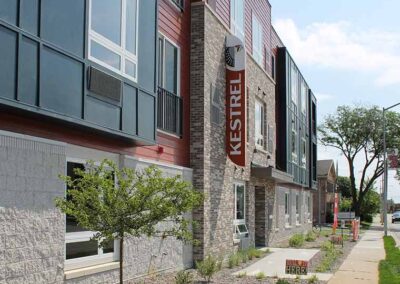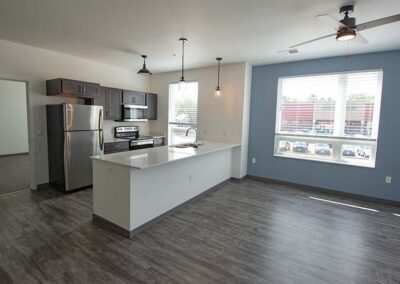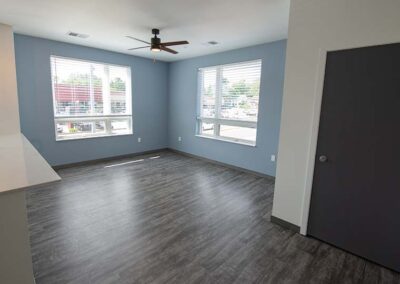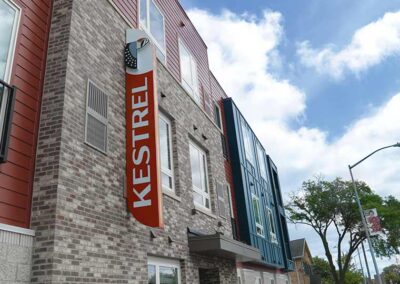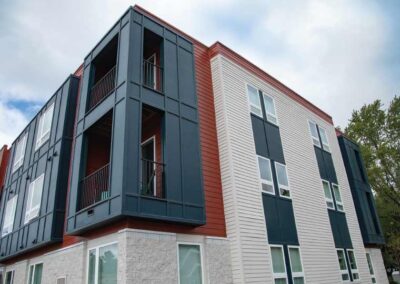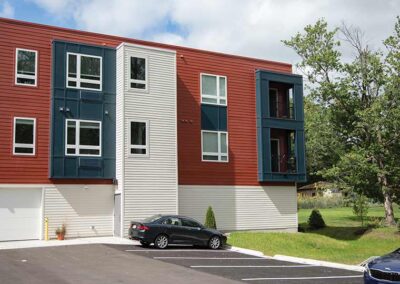Kestrel Case Study
Middleton, Wisconsin • Dane County
About the Project
Kestrel is ideally located to serve the growing demand of the city’s missing middle workforce. It is situated on University Avenue near downtown Middleton, three blocks from the Pheasant Branch Conservancy and within walking distance of thriving retail centers, restaurants, excellent schools, public bus transportation, and a host of recreational opportunities. It is close to the Meadows neighborhood, ranked the fourth most walkable neighborhood in Middleton.
The 39-unit, three-story complex features an attractive colorful façade and houses 14 studio, 21 one-bedroom, and four two-bedroom apartments. All units include a range, refrigerator, dishwasher, microwave, and in-unit washer and dryer. The building features an onsite part-time manager’s office, covered and heated parking garage and surface parking, and personal storage areas.
The Process
Recognizing the need to focus on affordable housing as a top priority in their community, a group of local employers, developers, and government entities in Middleton, Wisconsin formed the Economic Stability Council (ESC) to study the impact of affordable workforce housing on family instability in the county. Wisconsin Housing Preservation Corp. was a consulting member of the ESC.
The ESC created the Dane Workforce Housing Fund (DWHF), administered by the Madison Development Corporation (MDC), to help fund the development of affordable workforce housing for low- and moderate-income families in the community. The DWHF successfully raised over $12 million to provide gap funding for workforce housing developments, a need that exists throughout all of Dane County and the state of Wisconsin Kestrel was the first affordable housing project to receive funding from the DWHF.
The Kestrel development had already broken ground when WHPC assumed controlling interest in the project in 2020.
The Challenge
Unable to acquire tax credits, the original developer pivoted to a market-rate model to generate higher rents, obtain a higher appraisal for the loan, and raise cash for the development. Needing more funding, he reached out to WHPC to help support and complete the project.
As a nonprofit however, WHPC could not be a partner in a for-profit venture. Thus, WHPC decided to buy out Austringer’s interest in the project. Instead of developing a market project, WHPC shifted gears and made Kestrel an affordable housing project. To make the project feasible, WHPC got the City of Middleton to recognize its tax-exempt status and reduce the $80,000 real estate taxes on the property to an annual $15,000 PILOT (payment in lieu of taxes) payment. To help WHPC manage market fluctuations in the tax payment, the city agreed to cap any tax increases at the lower of 2 percent or the consumer price index.
When WHPC took over the project, the building was already designed, permitted, and a quarter of the way under construction. The project sat idle for eight months while WHPC negotiated a buyout with the previous developer, attracted bank financing, and entered into a construction continuation agreement with the design-build firm, Iconica.
Our Solution
WHPC has not typically incorporated new construction into its affordable housing portfolio. But Kestrel was a perfect storm of events: with political support, a developer in need of help, and an opportunity to build important workforce housing in a strong market.
Due to the fast-track nature of the project, tax-credits were not used to fund Kestrel. Instead, WHPC invested $1,092,459 to keep rents at a more affordable level and secured a $5,615,000 loan from First Business Bank. The only outside funding in the development was a $900,000 second loan from the Dane Workforce Housing Fund. The last piece of the financial puzzle was the tax exemption acknowledgment and agreed upon PILOT payment from the City of Middleton.
To make the numbers work and create higher value and loan proceeds, WHPC staff went through an intense effort to redesign interior spaces to add more leasable square footage to the existing design.

PROJECT TYPE
New Workforce Housing
LOCATION
Middleton, Wisconsin
COMPLETION DATE
August 2021
SITE SIZE
0.71 Acres
BUILDING SIZE
39 Affordable Apartments
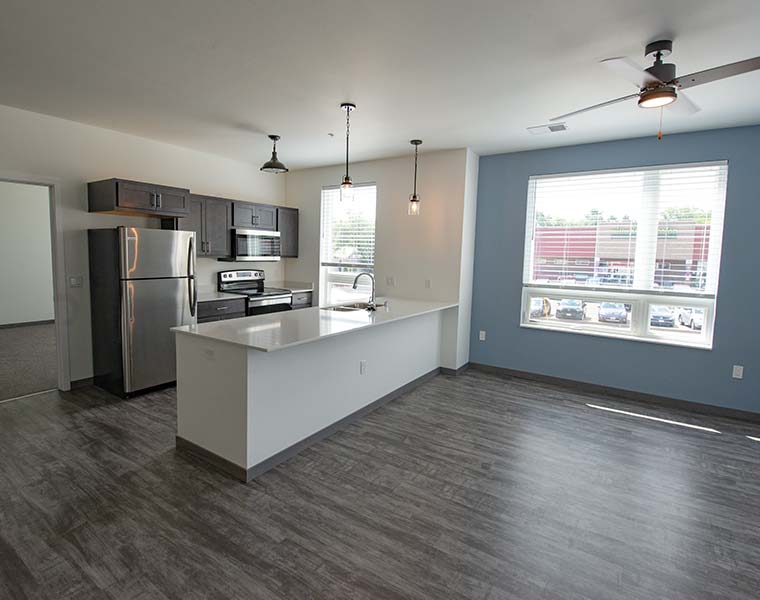
Kestrel was an opportunity for us to complete many objectives: a new high profile housing product in a major metropolitan market, improve our portfolio, promote our brand, and realize a return on our invested equity. It’s like a feather in our cap to WHPC’s mission and the markets we serve.
WHPC RESPONSIBILITIES
Acquisition, Development, Asset Management, Financial Management
FINANCIAL PARTNERS
WHPC Equity
First Business Bank Loan
Dane Workforce Housing Fund Loan
ARCHITECT
Iconica
CONSTRUCTION MANAGEMENT
Iconica
The Outcome
The $7.6 million project addresses the city’s critical workforce housing needs by providing vital affordable housing for working persons earning 50-80 percent of the county area median income (AMI).
New construction solutions like Kestrel provide desperately needed affordable housing for the county’s essential middle-income workforce—nurses, teachers, first responders, and others—who earn too much to qualify for traditional affordable housing, yet not enough to afford to live within the communities where they work.
